A vest-style Goller in red wool, suitable for a middle class early 16th century German women
Although I loved my red wool capelet-style Goller, I found it did not work well cooking over the fire – too prone to falling forward. I needed something similar that would keep my shoulders and neck warm, but would stay fixed while I worked.

The woodcut by Georg Pencz provided a starting point, and I then found several more images of this style of Goller worn by early 16th century German women in the middle classes. A similar style was worn by noble women, but made of fur-lined brocade.
Research & Design
Textiler Haurat (Zander-Seidel 1990) identifies this style as the ‘sleeveless jacket’ or ‘jacket-like’ type, but since it stops well above the waist, I think ‘vest-style’ is a better term. Zander-Seidel notes that, unlike the collar type, this style of Goller stayed in fashion for longer, persisting through to the 1570s.
The woodcut by Georg Pencz shows a middle class woman in a sleeveless jacket, with a guard along the edge. The jacket has a small collar and is closed down the front. The charcoal portrait by Dürer shows a similar garment, with finer decorative strips, while the Goller in the Quentel woodcut has no collar.
Most images (including Patrician examples in rich materials) show a wide shoulder, sometimes forming a little cap; also seen in the Dürer portrait. Since this was a working garment, I wanted free arm movement, so I chose a narrower shoulder, as in the Quentel woodcut.
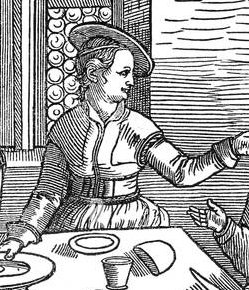
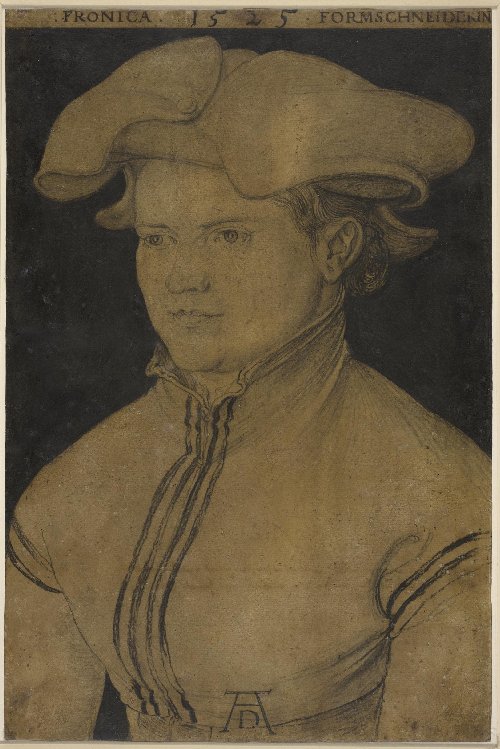
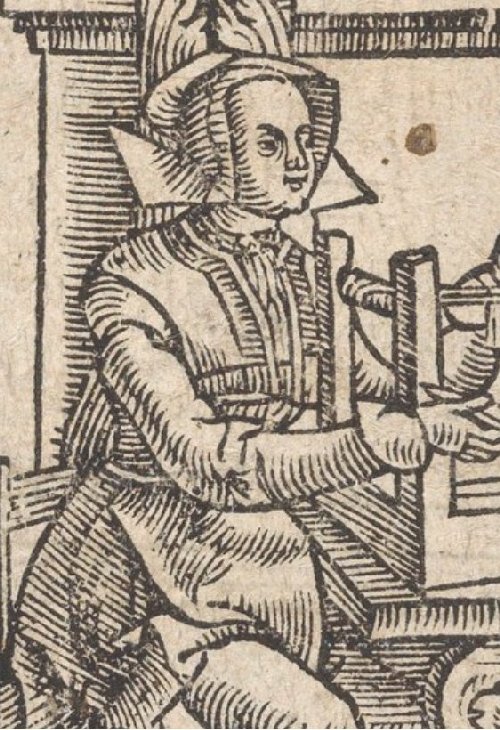
I really liked the contrast of red wool against my new grey linen Rock, so I used the same fine, well-fulled wool as my previous Goller, but with a linen lining.
Construction
This style of Goller fits snugly, so it had to be patterned while wearing my new Rock, to ensure it would fit well. I made an initial toile based on measurements over the garments, then tested and adjusted this to make a final pattern.
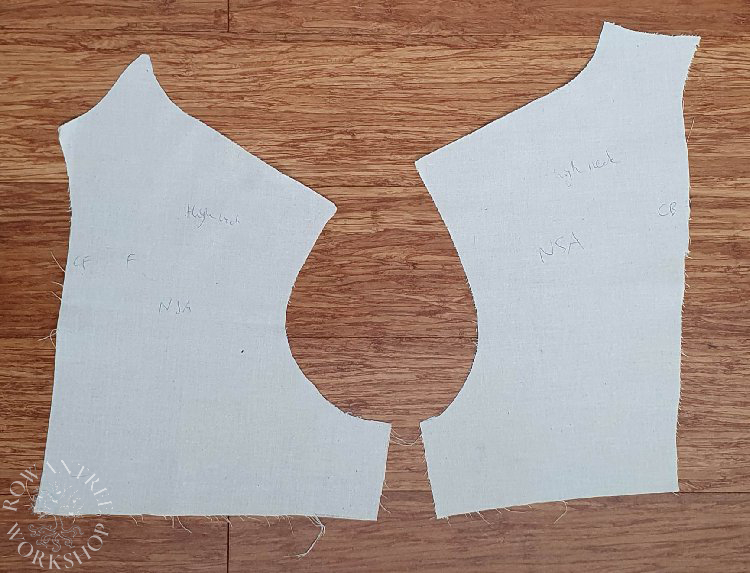
I cut the Goller out in wool and black linen, with no interlining. I made up the wool, pressing the seams well, then made up the lining likewise. I trimmed 3mm from the lining all around, then sewed the lining and wool right sides together around the perimeter to make a bag lining. I clipped the corners and turned the Goller, then clipped the armscyes and hand-sewed the lining in.
For the guarding, I used the pattern pieces to draft the band in two pieces – one across the back, and the other around the front and collar. I put the Goller on my dress form and tested the guard pattern using scrap fabric, to ensure it would sit well when worn (not just flat).
After cutting the pieces in black velveteen, I basted the guard to the Goller, clipped and turned the seam allowance under and hand sewed it along both edges, making sure I did not catch the lining. This sequence ensures the band sits exactly where I want it.
Finally, I sewed 4 sets of hooks and eyes down the front, to close the Goller.
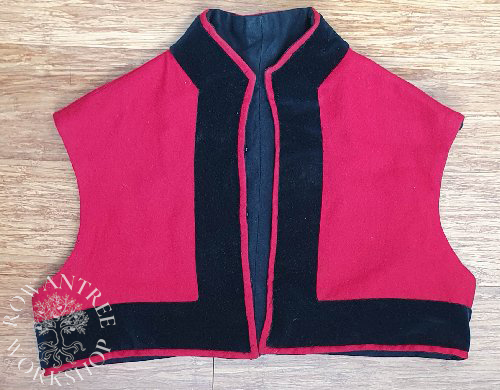
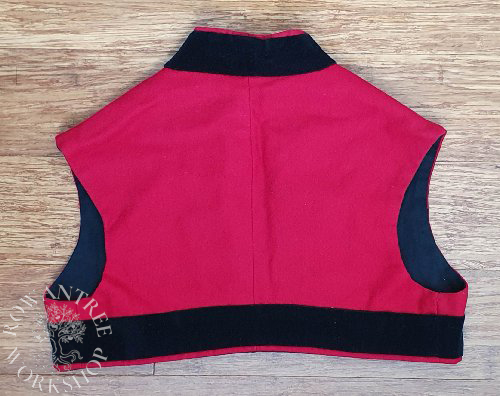
I was very pleased with the result. The finished Goller looked good, was easy to put on and off and provided enough warmth without getting on the way. In fact I liked it so much, I made another in green wool.


Afterthoughts
10 years later I am still wearing this Goller, although it is now too small to close at the front. It is such a useful garment – comfortable, practical, good looking….
Probably time to make a replacement – larger and with better construction methods.

